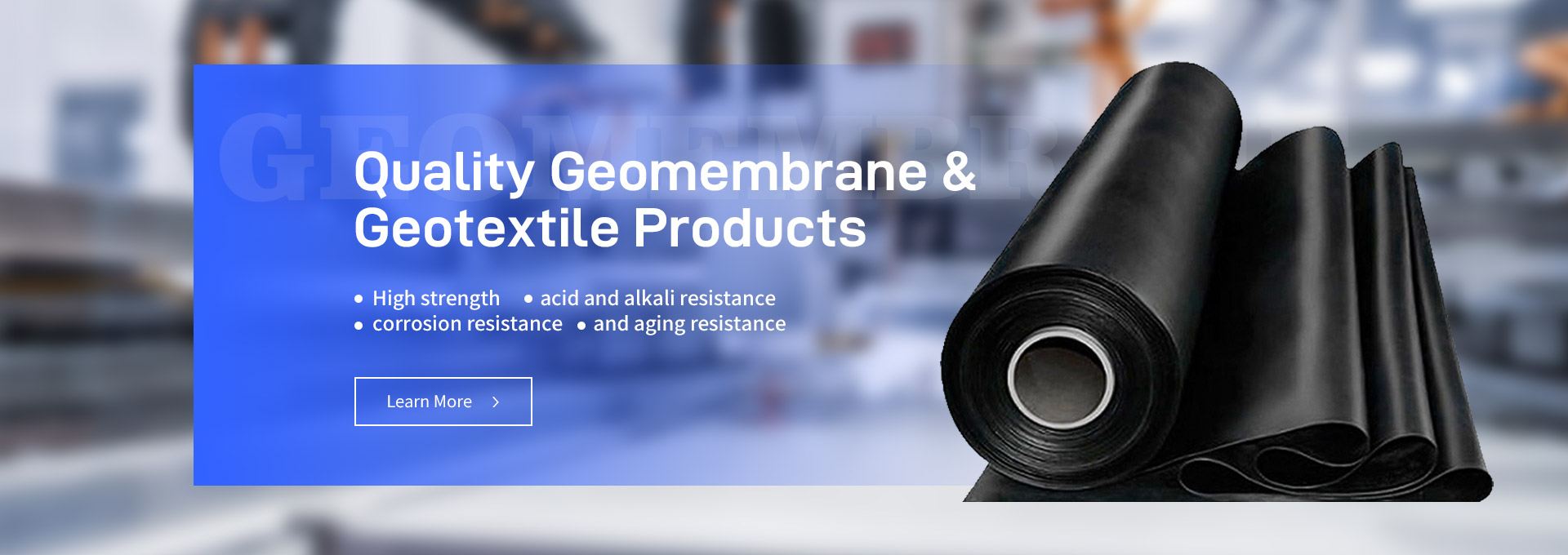As global awareness of environmental protection increases, many industries are seeking more sustainable materials to reduce their environmental impact. Geomembranes, widely used in water conservation projects, landfills, and mining, have become a key player in this movement. Today, we focus on environmental geomembrane, exploring its research, applications, and how it contributes to a greener future.

What is a Geomembrane?
First, let’s introduce geomembranes. A geomembrane is a high-polymer material designed for leakage prevention, isolation, and protection. It has excellent chemical resistance, tensile strength, and waterproofing abilities. Traditional geomembranes are often made from polyethylene (PE) or polypropylene (PP) and are used in various projects, including water conservation, environmental protection, and construction.
However, with growing demand for eco-friendly materials, environmental geomembrane is now gaining popularity. This new material not only excels in performance but also minimizes environmental impact during production and use.
The Advantages of Environmental Geomembranes
1. Use of Renewable Materials
One of the key highlights of environmental geomembrane is the use of renewable materials. Many eco-friendly geomembranes are made from recyclable or biodegradable polymers, which can be reused after their lifecycle ends, reducing environmental waste. Some types of environmental geomembranes even use biodegradable plastics, which break down naturally in soil without harming the environment.
By using renewable materials, these geomembranes not only reduce resource waste but also significantly lower their carbon footprint. Geomembrane manufacturers are actively working to improve material sustainability for all types of projects.
2. Superior Waterproofing Performance
Despite their eco-friendly focus, environmental geomembranes do not compromise on performance. They still maintain excellent waterproofing capabilities, effectively preventing leaks of water and hazardous substances. For instance, in landfills or mining sites, they stop harmful chemicals from seeping into groundwater, protecting the environment from contamination.
This high level of waterproofing makes environmental geomembranes ideal for projects such as water resource protection, waste management, and industrial containment, offering consistent and reliable environmental protection.
3. Extended Lifespan
Compared to traditional geomembranes, environmental geomembrane also offers an impressive lifespan. With advancements in modern technology, these geomembranes withstand extreme temperatures and environmental stress, lasting longer than standard materials. This means fewer replacements and lower maintenance costs for long-term projects.
For large-scale projects like reservoirs, tunnels, or environmental engineering, choosing a long-lasting environmental geomembrane ensures reliable performance over time. Using specialized equipment like a geomembrane welding machine also helps in maintaining the integrity of these materials over extended periods.
Application Fields of Environmental Geomembranes
1. Water Resource Protection
Water resource protection is a global concern. Polluted reservoirs, rivers, and lakes can directly affect people's quality of life and the surrounding ecosystems. Environmental geomembrane prevents pollutants from entering water bodies while also reducing water loss.
In reservoirs and canals, these geomembranes ensure clean water storage and protect against external contamination. In wastewater treatment projects, they act as barriers, preventing wastewater from seeping into groundwater, ensuring a safer environment.
2. Landfills
Landfills are another critical environmental area. Without proper containment, harmful chemicals can seep from landfills into groundwater, causing severe pollution. By using environmental geomembrane at the base and top of landfills, it blocks hazardous substances from leaking out and contaminating surrounding soil and water sources.
This application ensures landfill safety and increases their operational lifespan. Geomembrane welding machines play an essential role here, ensuring secure and leak-proof installations.
3. Mining Containment
Mining activities generate a significant amount of hazardous chemicals, which, if not properly contained, can cause irreversible environmental damage. Environmental geomembrane is used in mining sites to prevent toxic liquids from contaminating soil and groundwater. Its excellent sealing performance ensures that chemicals stay within designated areas, protecting nearby ecosystems.
Thanks to their long lifespan and durability, these geomembranes maintain their protective function even in harsh mining environments, where traditional materials would wear down quickly.
4. Agricultural Irrigation and Soil Conservation
In agriculture, environmental geomembranes find a wide range of uses. For example, they help prevent water loss in irrigation systems and improve the efficiency of water distribution. These geomembranes are also used in artificial wetlands and water reservoirs, providing a stable water supply for farming.
Their weather-resistant and corrosion-resistant properties make them ideal for agricultural use while minimizing environmental impact. Geomembrane manufacturers have developed specific materials tailored for agricultural projects to ensure long-term sustainability.
The Future of Environmental Geomembranes
With increased environmental awareness, the research and application of environmental geomembrane will continue to evolve. The future of geomembranes looks brighter, with more emphasis on sustainability and efficiency.
1. Use of New Materials
In the future, more biodegradable and highly renewable materials will be used in environmental geomembrane production. These materials will further reduce the environmental impact during production and disposal while enhancing functionality. We might even see self-healing geomembranes that repair themselves after damage, extending product lifespan and reducing resource consumption.
2. Green Production Technologies
Beyond materials, the production process of geomembranes is also moving towards greener methods. Geomembrane manufacturers are exploring low-carbon production techniques, ensuring cleaner energy use and reducing water consumption during manufacturing. These steps are crucial for achieving a fully sustainable geomembrane solution.
3. Smart Applications
Future environmental geomembranes may integrate with IoT technologies to offer real-time monitoring and management. With embedded sensors, these geomembranes could track environmental factors such as temperature, pressure, and chemical concentrations, detecting potential damage or leaks early. This would significantly improve safety and reduce maintenance costs.
Conclusion
The development and application of environmental geomembrane provide high-performance waterproofing solutions while contributing to environmental protection. By using renewable materials, enhancing protective capabilities, and extending lifespan, these geomembranes are making a significant impact in multiple fields.
As technology advances, the research and application of environmental geomembranes will expand further. We can expect that environmental geomembrane will become a core material in more environmental projects, driving the realization of a greener future.
From water resource protection to landfill containment and agricultural efficiency, environmental geomembranes are safeguarding our environment. Their importance will only grow, thanks to ongoing innovations from geomembrane manufacturers and the use of advanced tools like the geomembrane welding machine to ensure high-quality installations.

